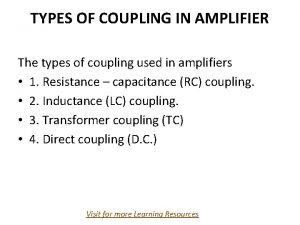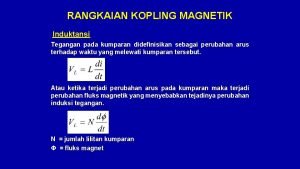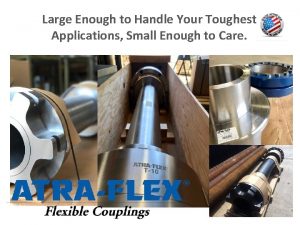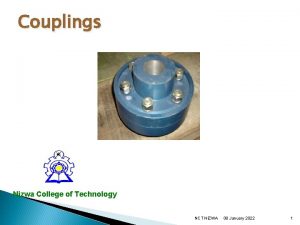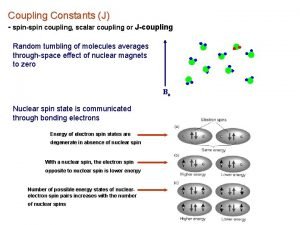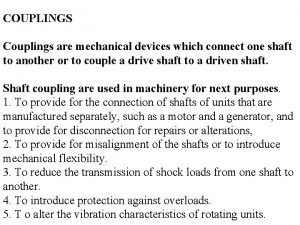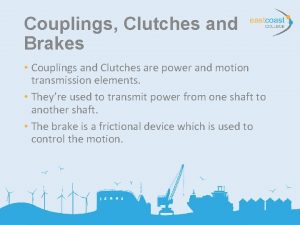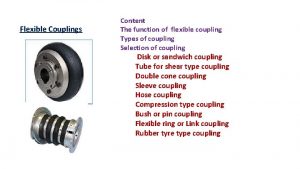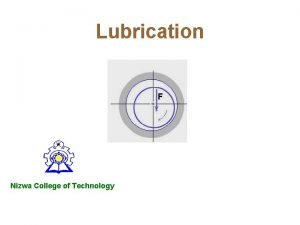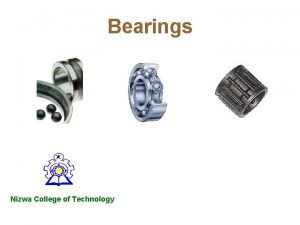Couplings Nizwa College of Technology Couplings Coupling is











- Slides: 11

Couplings Nizwa College of Technology

Couplings Coupling is a device used to connect two shafts together at their ends for the purpose of transmitting power Coupling Pump Motor

Uses of coupling • To provide connection of shafts of units made separately • To allow misalignment of the shafts or to introduce mechanical flexibility. • To reduce the transmission of shock loads • To introduce protection against overloads. • To alter the vibration characteristics

Types of coupling • • • Rigid Flexible Universal Flexible coupling Rigid coupling Universal coupling

Rigid coupling Flange Key Hub Driven Shaft Driving Shaft Flanged Coupling • Rigid couplings are used when precise shaft alignment is required • Simple in design and are more rugged • Generally able to transmit more power than flexible couplings • Shaft misalignments cannot be compensated

Flexible Coupling Flange Driven Shaft Driving Shaft Pin Bush • A flexible coupling permits with in certain limits, relative rotation and variation in the alignment of shafts • Pins (Bolts) covered by rubber washer or bush is used connect flanges with nuts • The rubber washers or bushes act as a shock absorbers and insulators.

Elastomeric coupling (Tyre Coupling) Elastomeric member Flange Bolt • An assembly of components designed to connect axially oriented shafts in order to provide power transmission • Able to accommodate shaft misalignment through elastomeric materials

Advantages and Limitations Advantages • Torsionally stiff • No lubrication or maintenance • Good vibration damping and shock absorbing qualities • Less expensive than metallic couplings • More misalignment allowable than most metallic couplings Limitations • Sensitive to chemicals and high temperatures • Usually not torsionally stiff enough for positive displacement • Larger in outside diameter than metallic coupling • Difficult to balance as an assembly

Soft Foot Soft foot is a condition in which one of the feet does not sit flat on the base One leg is too short or one base plate-mounting pad is not level with the other three The bottom of one foot is not parallel with the base

Soft Foot Dirt; grease; paints; rust, bent or burred shims; or too many shims are found under the foot External forces on one end of the equipment causes uneven settlement on the base

Procedure to check for Soft Foot • Position the machine on its bed plate • Tighten all the bolts to its normal torque value. • Install DTI with magnetic base between bed plate and foundation, on one of the four feet. • Move indicators to 12 o'clock position, depress indicators and then zero. • Loosen one base bolt. If indicator moves away form zero, record the positive reading • Place the amount of shims that will slide under that foot. • Retighten bolt and make sure the dial indicator needle does not move. • Repeat this procedure for the remaining feet.

